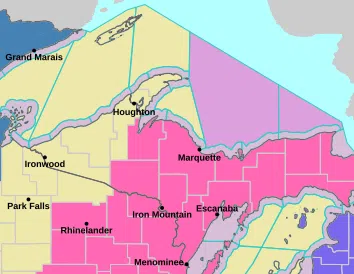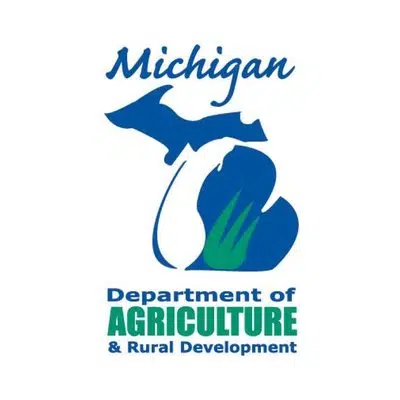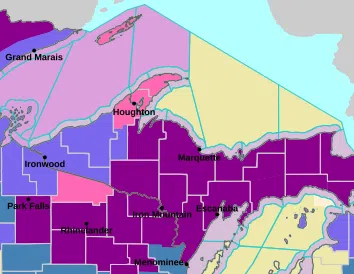The University of Michigan’s poverty and well-being map shows modest improvements across most of Michigan.
Statewide, the median income rose $2,832, the poverty rate dropped 1.1 percent and child poverty fell 1.6 percent. The new statewide average rate per county is 14 percent, and the average child poverty rate per county is 20.5 percent.
While the state saw improvements as a whole, county changes varied. Calhoun County had the greatest increase in poverty rate, up 2.3 percent. Houghton County saw the greatest decrease in poverty rate, down 5.3 percent from 2016. Roscommon County saw the greatest increase in child poverty, with more than 37 percent of children living below the poverty line. Van Buren County saw the greatest decrease, down 6.7 percent.
Crawford County saw the biggest increase in food assistance, with more than 150 additional households receiving supplemental nutrition assistance program benefits.
“The map shows a picture of gains statewide, but we know that significant challenges remain,” said H. Luke Shaefer, director of Poverty Solutions and associate professor at the Gerald R. Ford School of Public Policy and School of Social Work. “Looking across the county data we know that there are still a significant number of Michiganders who are experiencing disadvantage or scarcity.”
According to the latest American Community Survey, Michigan’s poverty rate of 14 percent puts it slightly higher than the national poverty rate of 12.3 percent and 35th in the nation—up one spot from last year. People considered poor had incomes below the poverty line—$24,600 annually for a family of four—in 2017.
The map, first released in 2017, streamlines an overwhelming amount of poverty and well-being data to better understand what’s happening in counties across Michigan.
The Poverty Solutions initiative at U-M developed the map to help policymakers, community organizations and the public understand the state of poverty in their communities.
Additional highlights from the map broken down by county include:
Median Income:
- Wayne County, often thought of as one of the low-income hubs of the state due to its association with Detroit, has a median income of more than $45,000. This is higher than 27 other counties, but the lowest in Southeast Michigan by more than $2,000.
-
The lowest household median income is $35,005 in Lake County.
-
The highest median income is $82,076 in Livingston County.
Percent below poverty:
-
Livingston County has the lowest poverty rate at 5.3 percent.
-
Only one county outranks Wayne County’s poverty rate of 22.6 percent—Isabella County—with 23.8 percent of its residents living in poverty.
Under 18 below poverty:
-
Lake County, where the adult poverty rate is 22.1 percent—the fourth highest in the state—has a child poverty rate of over 38 percent.
-
Half of the counties in the top 10 for child poverty rates do not rank in the top 10 for overall poverty rates: Iosco, Montmorency, Alscona, Oscoda and Crawford.
Food assistance (Supplemental Nutrition Assistance Program):
-
Lowest SNAP: Ottawa County, 4.7 percent.
-
Highest SNAP: Wayne County, 22.6 percent.
-
This data comes from 2017, the year before the SNAP work requirements went into effect. Only seven counties saw modest increases in households getting SNAP benefits, three in the Mid-Michigan region and four in the Northern Michigan region.
Life expectancy:
-
The lowest life expectancy is Wayne County, home to Detroit, at 75.3 years overall and 72.5 for men. The highest is Leelanau County at 83.1 years.
The data comes from the U.S. Census Bureau, the United Way, the Robert Wood Johnson Foundation’s County Health Rankings, and others. In addition to evictions, the map focuses on broad poverty and well-being related indicators, such as poverty rate, percentage of people on food assistance and life expectancy, to provide a snapshot of strengths and challenges in each county.
“Any one metric tells just part of the story,” Shaefer said. “Looking at a range of sources that shed light on various aspects of poverty and well-being gives us the clearest picture of where we can make progress.”
In addition to the data available on the map, Poverty Solutions has compiled more than 50 additional indicators publicly available.

























